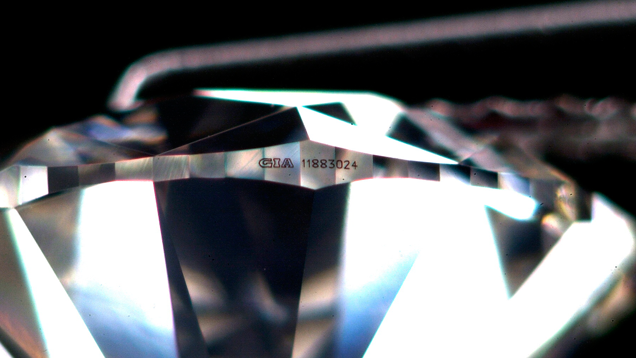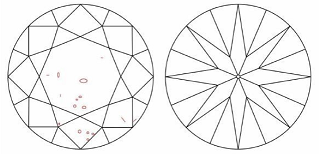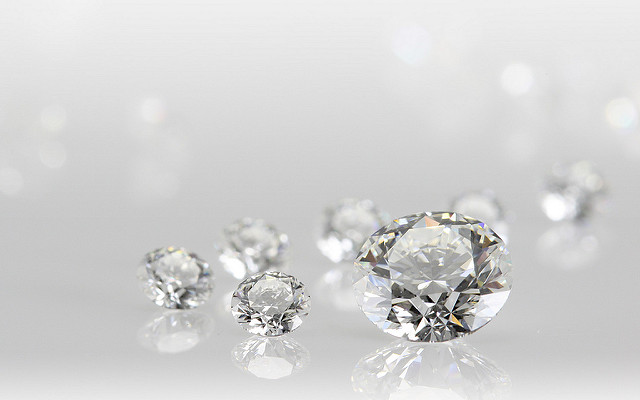There may be a unique code inscribed on your diamond and you probably didn’t even realize it. When determining the grade of a diamond, GIA diamond graders also use a micro-laser to inscribe a unique number specific to only that diamond. The inscription occurs on the diamonds girdle, the thin layer dividing the top and bottom portion of a diamond. But you won’t be able to see the inscription just by looking at the diamond. It can only be seen under at least 10x magnification and you’ll need at least 20x magnification to actually read the inscription.

Laser Inscribed Diamond
It’s important to note that not all diamonds have these inscriptions. The process of using lasers to inscribe messages and codes on diamonds wasn’t used until the 1980s. Before this time, gemstone graders would differentiate diamonds based on their inclusions and surface characteristics. The inclusions found in a diamond act like a fingerprint. No two diamonds are exactly alike and identifying a gemstone based on its inclusions and surface characteristics can help determine one diamond from another. More than likely, a diamond will either come with a plotting diagram showing its inclusions or it will have a laser inscribed code that connects it to its grading certificate. If neither of these are available, you should seriously reconsider purchasing that particular diamond.

Diamond Plotting Diagram
By connecting a gemstone to its certificate number or plotting diagram, diamond owners can always be sure that the diamond they are wearing is the one they actually paid for. You might also be able to recover a missing or stolen diamond based on the inscription or plotting diagram. We’ve heard stories of people losing their diamonds only to be reunited with them after identifying the diamond and its rightful owner through the GIA.
Even though laser inscriptions and plotting diagrams add an extra layer of protection, they are not always full proof. Laser inscriptions can easily be removed when polishing a diamond. Because of this, it’s important to always make sure that if at any time you decide to have your diamond polished, the diamond cutter is experienced enough to avoid accidentally removing the inscription. Similarly, the inclusions of a diamond can also be altered depending on how the gem is cut.
We know that for many people, purchasing a diamond requires a significant financial investment. Because of this, you may be weary of whether or not the diamond that you’re considering to purchase is the one that matches the grading certificate. Laser inscribed codes and plotting diagrams help alleviate some of this worry so that you can be sure that what you’re paying for is exactly what you’re getting. It also doesn’t hurt to make significant purchases like this at a reputable retailer.




